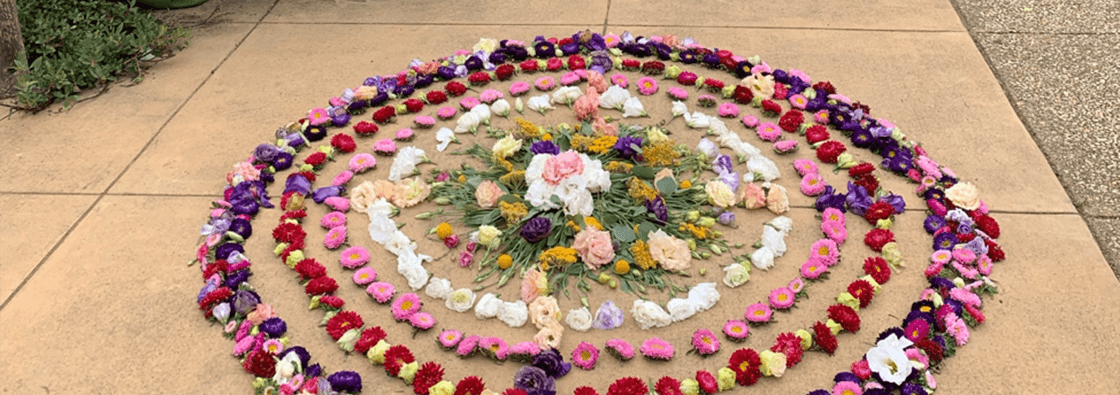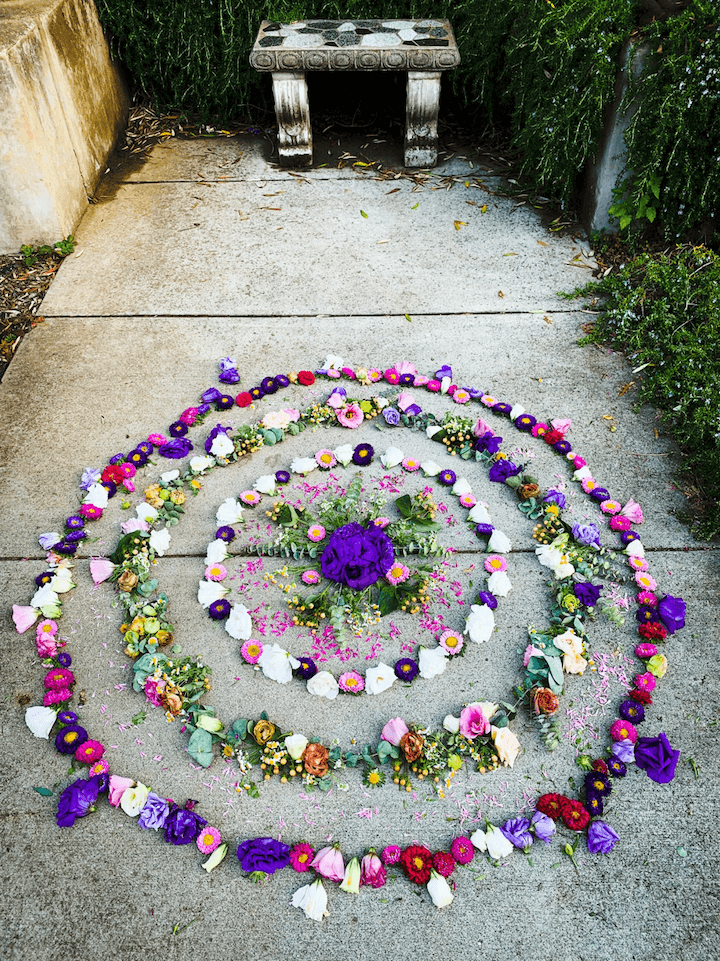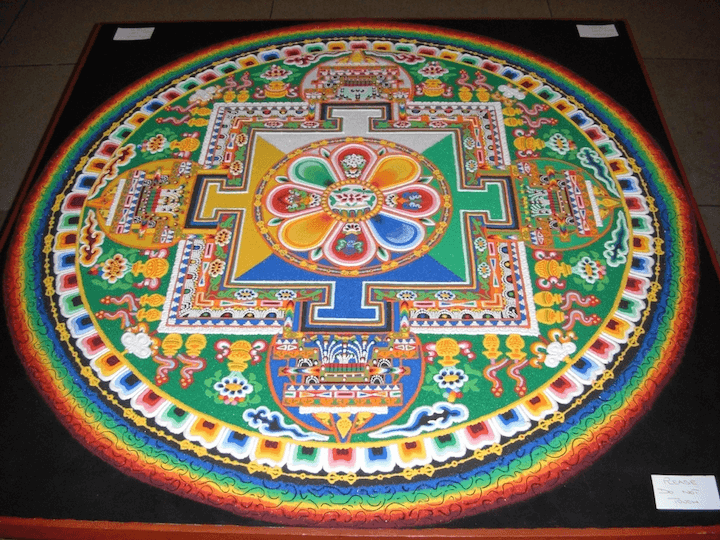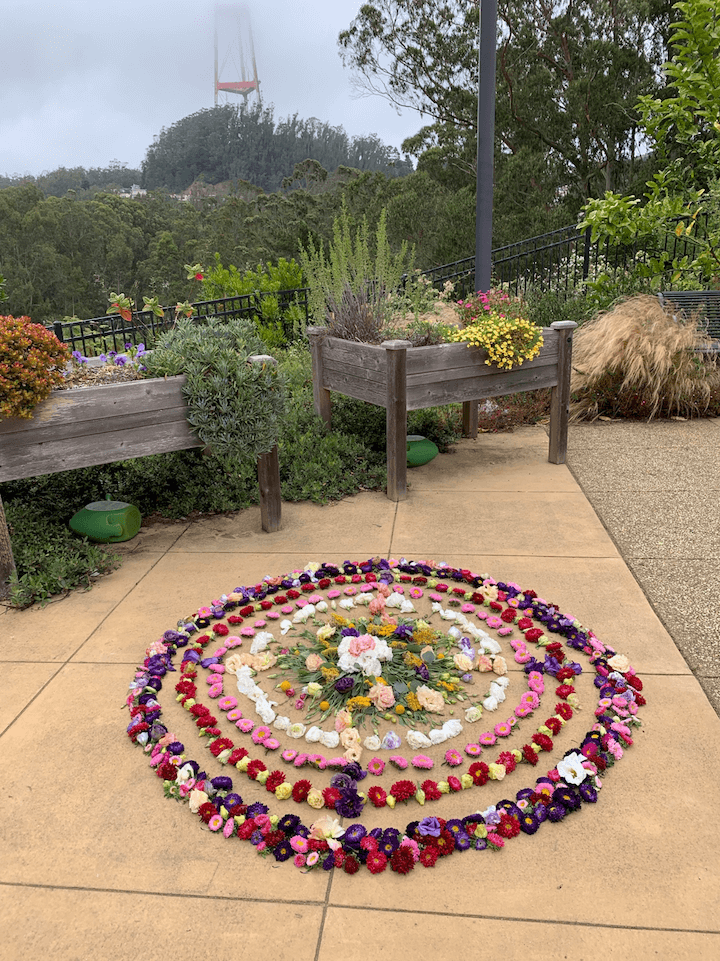Mandala Mondays


“We give life to the previous week’s flowers by creating a mandala as part of our closing ritual.” Cynthia Hogan, Bloom Project Volunteer
At Laguna Honda Hospital, nestled on the west side of San Francisco’s Twin Peaks, there is a secret garden. Tucked into the hill behind the South Tower and accessible only from the Palliative Care Ward, S3, is a serene oasis maintained by the volunteers of Zen Caregiving Project. It is a refuge for the residents, family members, staff, and volunteers of S3.
Every Monday morning, volunteers from the Bloom Project meet there for two hours to cut and arrange fresh flowers that are donated for the residents of the ward. When they are done, they create a mandala out of left over blossoms.
From the Sanskrit, the word mandala literally means circle or disk. They are geometric representations of the universe or wholeness, encompassing both the material and non-material worlds and appear frequently in Buddhist and Hindu iconography as well as Native American culture. Tibetan Buddhism, in particular, has a tradition of creating sand mandalas that are demolished after their completion and accompanying ceremony.

Mandalas are symbols of impermanence, reminders of the fleeting nature of both beauty and life. As the days pass in the S3 garden, the blooms fade and the symmetry of the flowers become jumbled by the wind, a poignant testament to the inescapable reality of change.
The mandalas are created by the group or any individual who feels moved to do so. For volunteer Roberta Weiss, “Participating in mandala creation is a healing artistic activity and meditative practice.” Volunteer Janice Polizzi explains, “When the work is done we stand in a circle and dedicate the beauty to others… Our intention is always to offer well wishes and healing.”
Rosemarie Morales finds connection and meaning in her work with the Bloom Project having had personal experience with the difference that flowers can make for people in care facilities. The joy that she witnessed when bringing flowers to her father was a catalyst for joining the Bloom Project.
For her, building a mandala is just as important as arranging the flowers. “I love being a part of creating the mandala – from being able to realize the uniqueness of what each flower has to offer, to the process itself of creating a pattern and seeing how much even one flower can enhance the collective display of a whole design, to setting intentions out to the universe once the mandala has been completed. It’s a fun and beautiful process that I hope brings light to people’s hearts.”



